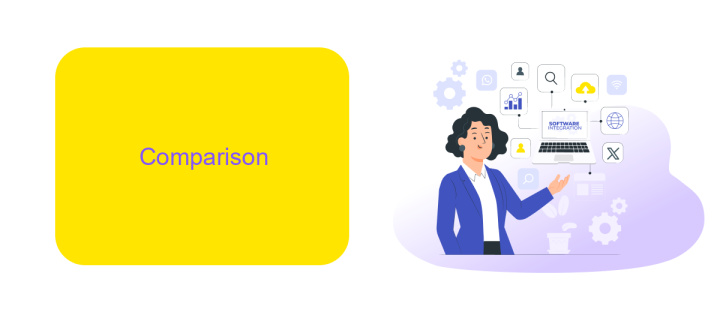Cloud Endpoints Vs Apigee
In the rapidly evolving landscape of API management, choosing the right platform is crucial for seamless integration and optimal performance. This article delves into a comparative analysis of two leading solutions: Google Cloud Endpoints and Apigee. By examining their features, capabilities, and use cases, we aim to provide insights that will help businesses make informed decisions tailored to their specific needs.
Introduction
As businesses increasingly adopt cloud technologies, the need for robust API management solutions has become more critical than ever. Cloud Endpoints and Apigee are two prominent players in this space, offering unique features and capabilities to streamline API management. Understanding the differences between these two services can help organizations make informed decisions that align with their specific needs.
- Cloud Endpoints: A Google Cloud service designed to develop, deploy, and manage APIs with ease.
- Apigee: A comprehensive API management platform from Google Cloud that provides advanced tools for API analytics, security, and monetization.
Both Cloud Endpoints and Apigee offer powerful solutions for API management, but they cater to different requirements and use cases. While Cloud Endpoints is ideal for developers looking for a streamlined and integrated approach, Apigee provides a more extensive suite of tools for enterprises needing advanced API management features. By comparing these two services, businesses can better understand which platform will best support their API strategies and operational goals.
Comparison

Cloud Endpoints and Apigee are both powerful API management tools, but they cater to different needs and use cases. Cloud Endpoints, provided by Google Cloud, is ideal for developers looking for a lightweight, serverless solution that integrates seamlessly with Google Cloud services. It offers straightforward API deployment and management, making it a preferred choice for small to medium-sized projects. Apigee, on the other hand, is a more robust platform that provides advanced features such as API analytics, monetization, and developer portals. It is well-suited for enterprises requiring comprehensive API management capabilities and extensive customization options.
When it comes to integration, tools like ApiX-Drive can facilitate seamless connections between various services and APIs, enhancing the capabilities of both Cloud Endpoints and Apigee. ApiX-Drive offers a user-friendly interface for setting up integrations without the need for extensive coding knowledge, making it a valuable addition to any API management strategy. Ultimately, the choice between Cloud Endpoints and Apigee depends on the specific requirements of your project, including scalability, complexity, and the need for advanced features.
Features

Cloud Endpoints and Apigee are two robust API management platforms that offer a range of features to streamline API development and management. Both solutions aim to simplify the process of creating, deploying, and maintaining APIs, but they do so in different ways, catering to varied business needs.
- Scalability: Cloud Endpoints is designed to scale effortlessly with Google Cloud infrastructure, while Apigee offers advanced scaling options suitable for large enterprises.
- Security: Apigee provides comprehensive security features, including OAuth, JWT, and API key validation, whereas Cloud Endpoints focuses on basic security measures.
- Analytics: Apigee excels in providing detailed analytics and monitoring tools, whereas Cloud Endpoints offers more basic logging and monitoring capabilities.
- Integration: For seamless integration with other services, ApiX-Drive can be utilized to connect Cloud Endpoints or Apigee with various third-party applications, enhancing their functionality.
Choosing between Cloud Endpoints and Apigee largely depends on the specific requirements of your project. For businesses needing advanced features and comprehensive analytics, Apigee is the better choice. However, for those seeking a simpler, more scalable solution, Cloud Endpoints is an excellent option. Integrating either platform with services like ApiX-Drive can further enhance their capabilities, making API management even more efficient.
Pricing

When comparing Cloud Endpoints and Apigee, pricing is a critical factor to consider. Both platforms offer scalable solutions, but their pricing models differ significantly. Cloud Endpoints follows a pay-as-you-go model, which can be cost-effective for smaller projects or startups with limited budgets.
On the other hand, Apigee offers a more comprehensive pricing structure tailored for enterprise-level needs. Apigee's pricing includes various tiers, each with its own set of features and services, allowing businesses to choose the plan that best fits their requirements. This can be beneficial for larger organizations needing advanced functionalities and support.
- Cloud Endpoints: Pay-as-you-go, suitable for small projects.
- Apigee: Tiered pricing, ideal for enterprises.
- Additional costs may apply for extra features and support.
For businesses looking to integrate multiple APIs seamlessly, services like ApiX-Drive can be invaluable. ApiX-Drive provides automated workflows and integrations that can simplify the process, potentially reducing the overall costs associated with managing API integrations. Therefore, it's essential to evaluate both the direct and indirect costs when choosing between Cloud Endpoints and Apigee.
Conclusion
In conclusion, both Cloud Endpoints and Apigee offer robust solutions for API management, each with its own strengths and ideal use cases. Cloud Endpoints is well-suited for developers seeking a straightforward, cost-effective option integrated with Google Cloud's ecosystem. Its simplicity and ease of use make it an excellent choice for small to medium-sized projects where budget and time efficiency are critical factors.
On the other hand, Apigee excels in providing a comprehensive, enterprise-grade platform with advanced features for security, analytics, and monetization. It is the go-to option for large-scale enterprises requiring extensive control and customization over their API management. For those looking to streamline their integration processes further, services like ApiX-Drive can offer valuable support, simplifying the connection between various applications and automating workflows. Ultimately, the choice between Cloud Endpoints and Apigee should be guided by the specific needs and scale of your project.
- Automate the work of an online store or landing
- Empower through integration
- Don't spend money on programmers and integrators
- Save time by automating routine tasks
FAQ
What is the primary difference between Cloud Endpoints and Apigee?
Which service is better suited for large-scale enterprise applications?
Can I use both Cloud Endpoints and Apigee in a single project?
What are the cost implications of using Cloud Endpoints vs Apigee?
Is there a service that can help integrate and automate API workflows without heavy coding?
Apix-Drive is a universal tool that will quickly streamline any workflow, freeing you from routine and possible financial losses. Try ApiX-Drive in action and see how useful it is for you personally. In the meantime, when you are setting up connections between systems, think about where you are investing your free time, because now you will have much more of it.


